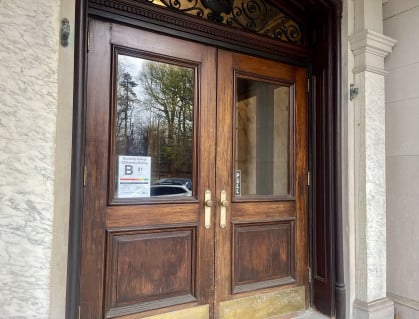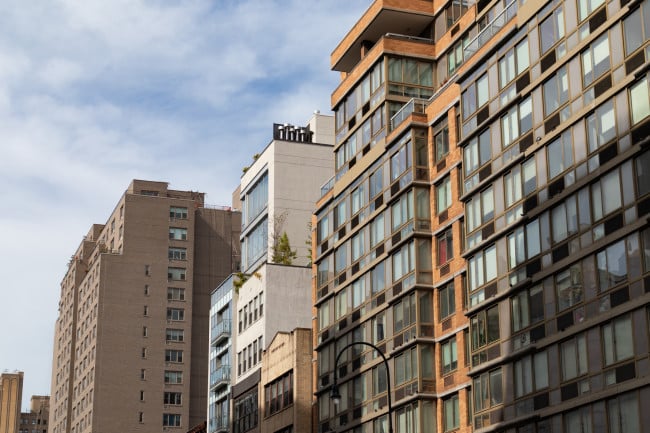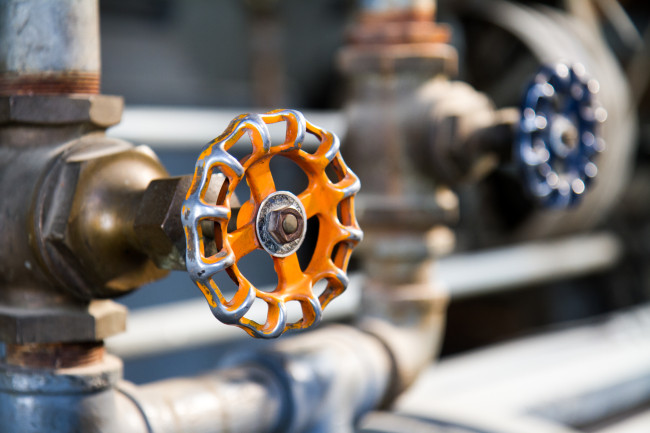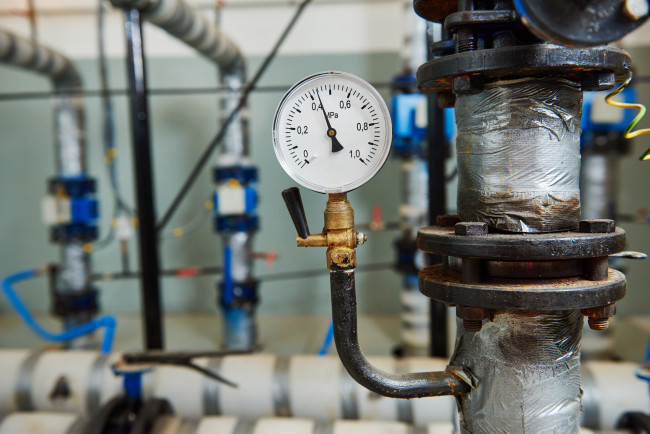Our NYC building has a high energy efficiency rating. Does that mean we can avoid major Local Law 97 upgrades?
- Your building's energy efficiency grade and Local Law 97 are two separate issues
- The grade looks at energy use while Local Law 97 seeks to reduce energy emissions
- If your building has an A but uses fossil fuels you will need to make improvements

It's necessary to evaluate your building's energy emissions even if you have a high benchmarking score.
Emily Myers for Brick Underground
A high energy efficiency grade for your co-op or condo building does not necessarily mean the upgrades to reduce building emissions under Local Law 97 will be minimal, our experts say.
"The grade and Local Law 97 are two different things," says Luke Surowiec, program manager at NYC Accelerator, a city-sponsored organization helping buildings towards emission compliance.
The grade on public display in your building is a result of a process called benchmarking. This pre-dates the new energy emissions requirements and your property manager typically outsources what is reported in the Energy Star Portfolio Manger software to an energy supplier.
The grade looks at relative energy use but the new emission requirements go a step further, most importantly considering the type of fuel that's used, Surowiec says. Put simply: If your building has an A grade for energy efficiency but has mechanical systems using fossil fuels, you will need to make changes. Regardless of the grade, co-op and condo buildings over 25,000 square feet will need to comply with the new law by submitting reports to the Department of Buildings starting in 2025.
"Even those with a good grade today may eventually face fines and have to make improvements," Surowiec says.
Penalties for excess energy emissions increase in 2030
Local Law 97 assigns buildings an allowance of carbon emissions, which gets progressively smaller every five years, aiming for an 80 percent reduction in emissions by 2050. So even if your building is currently compliant with Local Law 97 and not facing any fines when they start being issued in 2025, by 2030 it may be a different story.
Switching the mechanical systems in the city's buildings to electricity for heating and cooling rather than oil or natural gas is seen as the best way to reduce building emissions. Surowiec says, as more hydroelectric power sources come online, New York's electricity supply will get "cleaner in five years and even cleaner five years after that."
For most buildings the best way to comply with Local Law 97 is through incremental improvements to building systems so they use less energy overall, followed by a plan to generate at least some of your own electricity (for example through solar), and then to electrify heating, cooling, and hot water production by switching from boilers that burn fossil fuels to heat pumps powered by electricity.
"For all, this means planning now before the first reports to the Department of Buildings are due in 2025," he says.
Want to get a comprehensive report on the potential issues with a building before you rent or buy it? Run the address through the Brick Report and get a real estate background check built from all of New York City's Open Data in one place. Brought to you by Brick Underground.
The importance of accurate energy use reporting
The benchmarking grades give owners and property managers guidance on how their buildings are performing relative to other similar buildings. “There were no penalties associated with having a bad grade; the hope was that the comparison itself would move people to make improvements,” Surowiec says.
Using less energy is an important first step towards Local Law 97 compliance. This involves getting a qualified energy auditor to verify your buildings’ energy usage.
Tina Larsson, co-founder of co-op and condo consultancy The Folson Group, says an analysis by her firm finds most buildings with an A—and even a B—are not reporting their building’s total energy use. "We see buildings that are not reporting the electric usage inside the apartments, or by the commercial tenants," she says.
As more and more energy audits are scheduled by co-op and condo buildings Larsson expects to see "many buildings’ energy efficiency scores decline and the cost of necessary retrofits to reduce carbon emissions increase."
Data compiled by The Folson Group finds 70 percent of energy use is from heating the building and 3 percent is from cooking gas. "When a building reports that it has 3 percent of its total energy use from gas and they have not reported any oil or steam and their electricity is in line with the average building consumption, we conclude that they have not reported all their energy accounts or sources," Larsson says.
In addition, she says some buildings that converted from oil to gas never added the additional account to their reporting.
So while benchmarking grades and Local Law 97 fines are two different energy efficiency indicators, Surowiec says, “we encourage everyone—even the As—to start planning today.”
You Might Also Like
Sign Up for our Boards & Buildings Newsletter (Coming Soon!)
Thank you for your interest in our newsletter. You have been successfully added to our mailing list and will receive it when it becomes available.






















